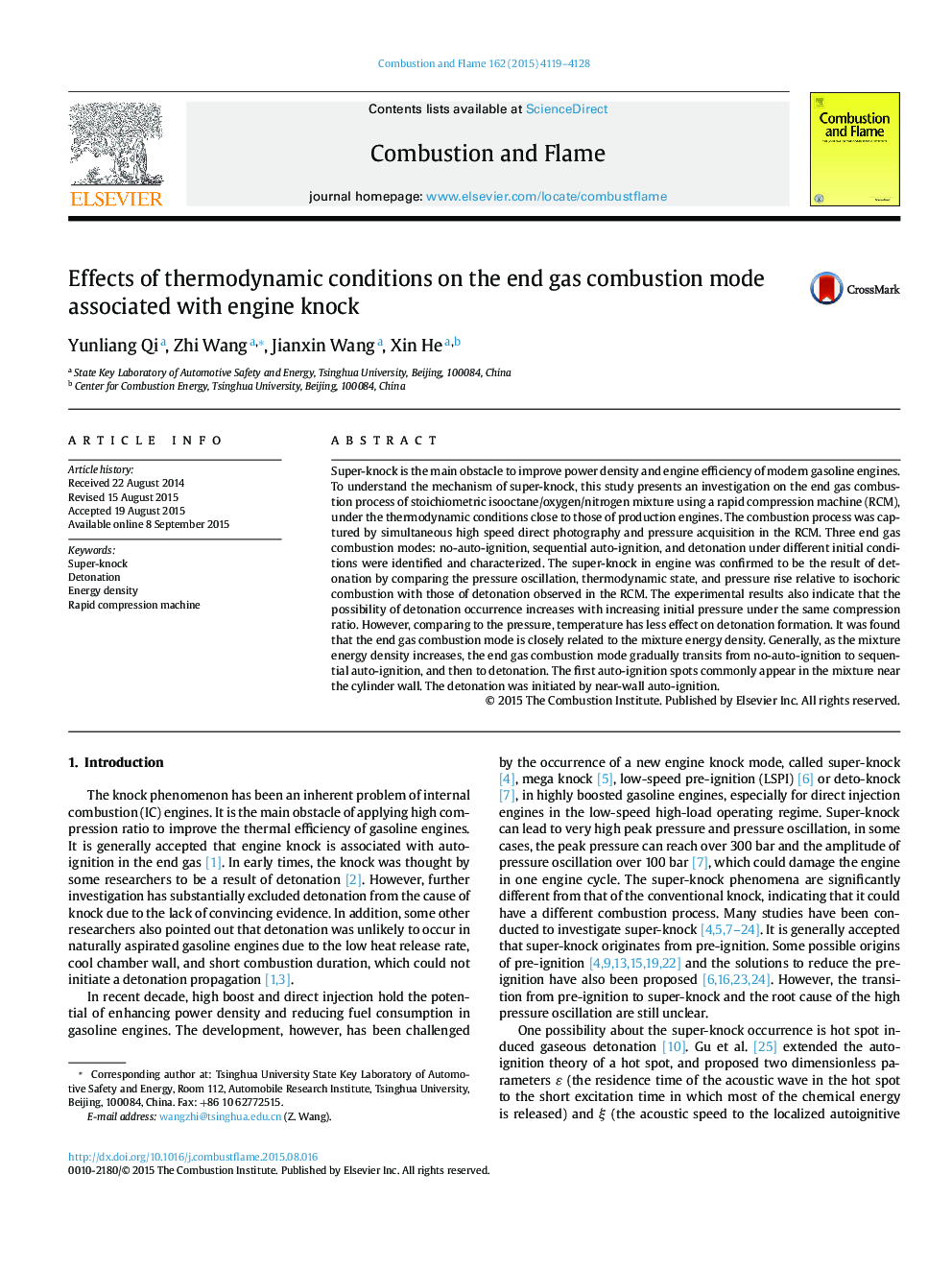| Article ID | Journal | Published Year | Pages | File Type |
|---|---|---|---|---|
| 10264358 | Combustion and Flame | 2015 | 10 Pages |
Abstract
Super-knock is the main obstacle to improve power density and engine efficiency of modern gasoline engines. To understand the mechanism of super-knock, this study presents an investigation on the end gas combustion process of stoichiometric isooctane/oxygen/nitrogen mixture using a rapid compression machine (RCM), under the thermodynamic conditions close to those of production engines. The combustion process was captured by simultaneous high speed direct photography and pressure acquisition in the RCM. Three end gas combustion modes: no-auto-ignition, sequential auto-ignition, and detonation under different initial conditions were identified and characterized. The super-knock in engine was confirmed to be the result of detonation by comparing the pressure oscillation, thermodynamic state, and pressure rise relative to isochoric combustion with those of detonation observed in the RCM. The experimental results also indicate that the possibility of detonation occurrence increases with increasing initial pressure under the same compression ratio. However, comparing to the pressure, temperature has less effect on detonation formation. It was found that the end gas combustion mode is closely related to the mixture energy density. Generally, as the mixture energy density increases, the end gas combustion mode gradually transits from no-auto-ignition to sequential auto-ignition, and then to detonation. The first auto-ignition spots commonly appear in the mixture near the cylinder wall. The detonation was initiated by near-wall auto-ignition.
Related Topics
Physical Sciences and Engineering
Chemical Engineering
Chemical Engineering (General)
Authors
Yunliang Qi, Zhi Wang, Jianxin Wang, Xin He,
